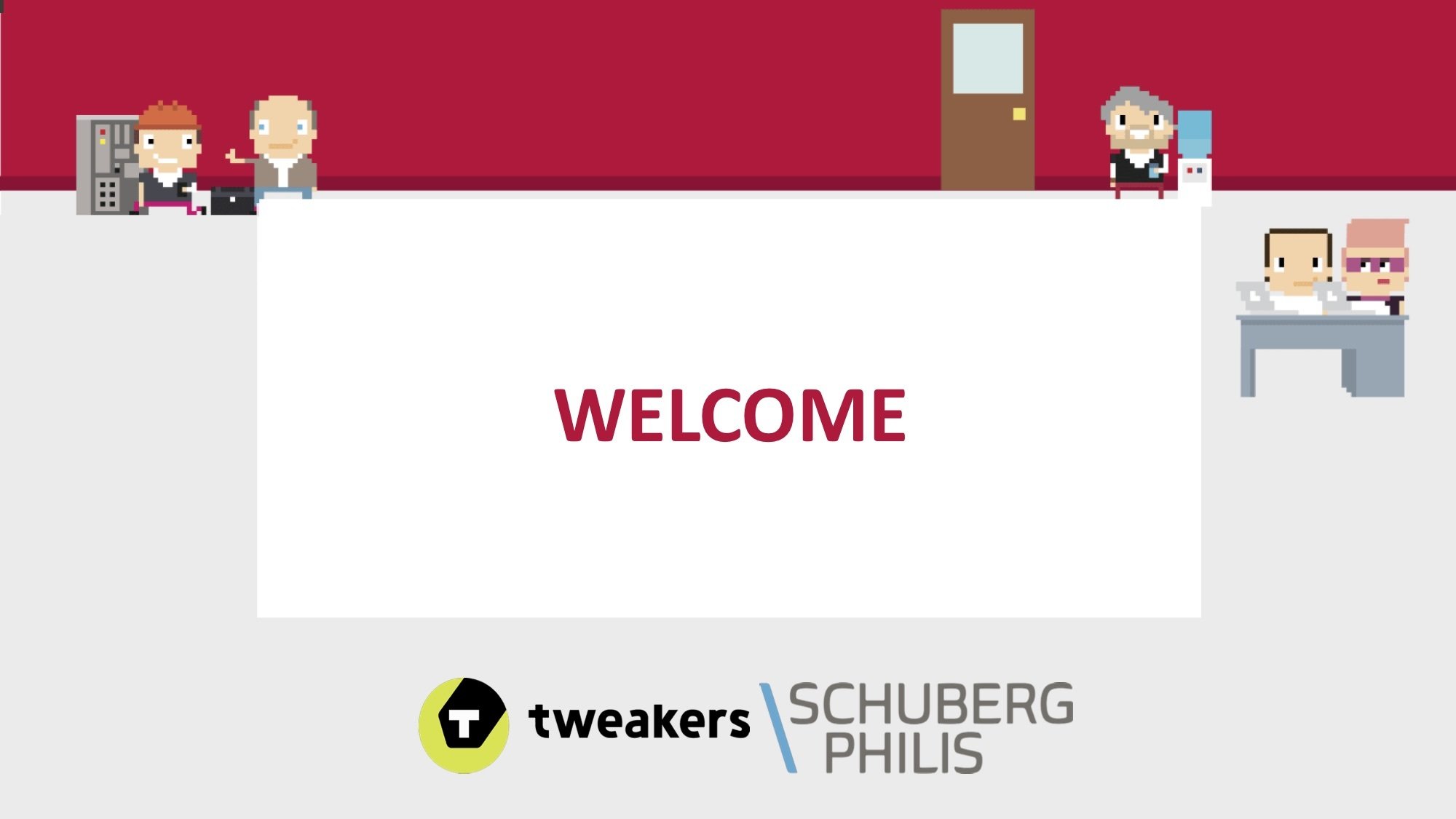
Containerisation and Kubernetes
Tweakers and Schuberg Philis

Andy Repton,
Mission Critical Engineer
@ Schuberg Philis
@SethKarlo
Dennis Brouwer, Mission Critical Engineer @ Schuberg Philis

@dennusb
Introduction

The team helping today
Omar
Eimar
Ninad
Eelco
Ismael
Michael
Giancarlo
Raphael








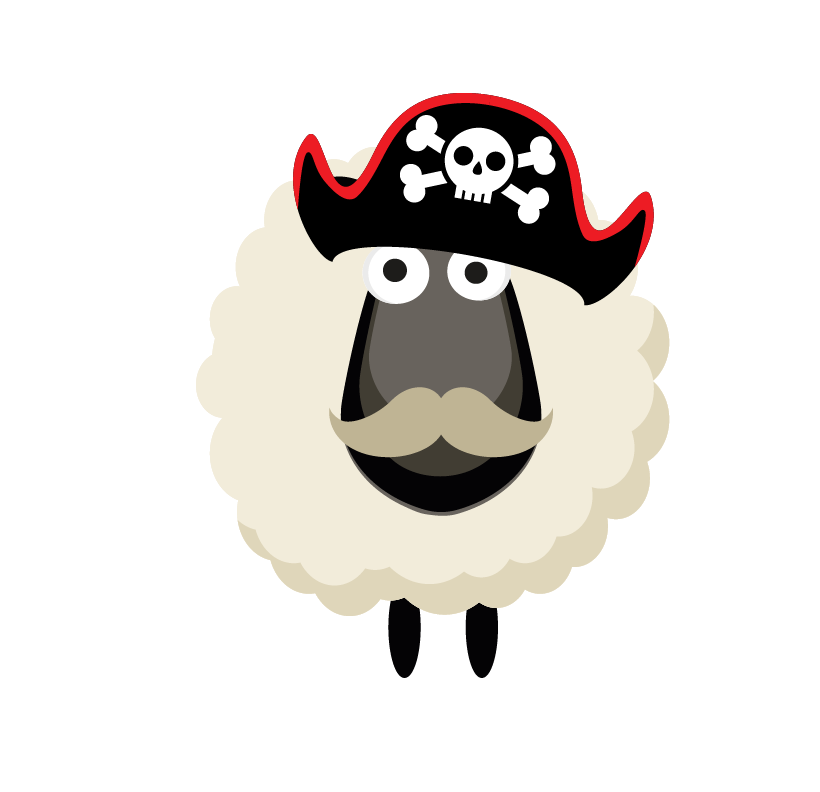
The plan for today
- Build a node.js guestbook using Docker
- Run on our laptops and add a docker volume
- Deploy our application to our own Kubernetes cluster
- Deploy a mysql database and connect our guestbook to it
- Time permitting, add a quota to our cluster
- Time permitting, add liveness probes to our container

Clone the workshop repository using git
http://bit.ly/tweakersworkshop

Join the Slack Channel to share with one another
http://bit.ly/tweakersslack

Creating a guestbook

What is a container?

- An isolated runtime for applications
- Containers share the kernel of the host
- Portable and easy to use!

Why use Docker?
- Keep all of our build isolated
- Run our code anywhere without needing to install node
- Prevent processes running inside the container from breaking out


Building our image
- Docker images are built using a Dockerfile
- Make sure you're inside the workshop repository and create a new file named 'Dockerfile' using your favourite text editor
# If on Linux/Mac:
$ cd tweakers-workshop
$ ls
README.md database.sql db index.js package.json views workshop.sh
$ vim Dockerfile
# If on Windows:
$ Set-Location tweakers-workshop
#use notepad to create the file named 'Dockerfile'
Building our Dockerfile
# Base image from the default Node 8 image
FROM node:8-alpineInside the Dockerfile, we start with a FROM keyword. This allows us to pull in a preexisting container image and build on top of it
Here, we're going to start with the official node image (when the URL is not set Docker will default to the Docker Hub) and use the alpine tag of that image
# Docker format:
<repository>/<image>:<tag>
Building our Dockerfile
# Base image from the default Node 8 image
FROM node:8-alpine
# Set /usr/src/app as the directory where our app resides
WORKDIR /usr/src/appNext, we'll set the WORKDIR for the container. This will be the where docker will run the process from
Every new command in the Dockerfile will create a new layer. Any layers that already exist on the host will be reused rather than recreated. Docker keeps track of these using a hash

Building our Dockerfile
# Base image from the default Node 8 image
FROM node:8-alpine
# Set /usr/src/app as the directory where our app resides
WORKDIR /usr/src/app
#Copy the package.json to the container
COPY package*.json ./Now we will COPY the package.json of our guestbook into the container from our current working directory
Docker cannot copy files from outside of this directory into the container, to prevent someone from giving you a malicious Dockerfile that might copy confidential files into the container

# Base image from the default Node 8 image
FROM node:8-alpine
# Set /usr/src/app as the directory where our app resides
WORKDIR /usr/src/app
#Copy the package.json to the container
COPY /etc/passwd /usr/src/appFor example, this won't work:
docker build .
Sending build context to Docker daemon 230.4kB
Step 1/2 : FROM node:8-alpine
---> df48b68da02a
Step 2/2 : COPY /etc/passwd /usr/src/app
COPY failed: stat /var/lib/docker/tmp/docker-builder918813293/etc/passwd: no such file or directory

Building our Dockerfile
# Base image from the default Node 8 image
FROM node:8-alpine
# Set /usr/src/app as the directory where our app resides
WORKDIR /usr/src/app
#Copy the package.json to the container
COPY package*.json ./
#Running npm install to make sure all dependencies are installed
RUN npm installNow we will RUN an npm install. RUN only applies on the build step, this is not what will run when the container is started

Building our Dockerfile
# Base image from the default Node 8 image
FROM node:8-alpine
# Set /usr/src/app as the directory where our app resides
WORKDIR /usr/src/app
#Copy the package.json to the container
COPY package*.json ./
#Running npm install to make sure all dependencies are installed
RUN npm install
#Copy the source of the app to the container
COPY . .And now we can COPY the rest of our Guestbook into the container

Building our Dockerfile
# Base image from the default Node 8 image
FROM node:8-alpine
# Set /usr/src/app as the directory where our app resides
WORKDIR /usr/src/app
#Copy the package.json to the container
COPY package*.json ./
#Running npm install to make sure all dependencies are installed
RUN npm install
#Copy the source of the app to the container
COPY . .
#Exposing port 80
EXPOSE 80Next, we will EXPOSE the container on port 80, so we can reach the application

Building our Dockerfile
# Base image from the default Node 8 image
FROM node:8-alpine
# Set /usr/src/app as the directory where our app resides
WORKDIR /usr/src/app
#Copy the package.json to the container
COPY package*.json ./
#Running npm install to make sure all dependencies are installed
RUN npm install
#Copy the source of the app to the container
COPY . .
#Exposing port 80
EXPOSE 80
#The start command for the container
CMD [ "npm", "start" ]And finally we will add the CMD to the container image, which is what Docker will run when the container is started

Building our image
$ docker build .
Sending build context to Docker daemon 172kB
Step 1/7 : FROM node:8-alpine
---> df48b68da02a
Step 2/7 : WORKDIR /usr/src/app
---> Using cache
---> af799e6f4e50
Step 3/7 : COPY package*.json ./
---> Using cache
---> f1dab9fdeebd
Step 4/7 : RUN npm install
---> Using cache
---> d7d77f36899b
Step 5/7 : COPY . .
---> d0d1c0a47688
Step 6/7 : EXPOSE 80
---> Running in 25f8f11dcdf2
Removing intermediate container 25f8f11dcdf2
---> f67edb95e5ad
Step 7/7 : CMD [ "npm", "start" ]
---> Running in 9654b5e9692e
Removing intermediate container 9654b5e9692e
---> fafc76f4a21d
Successfully built fafc76f4a21dWith the Dockerfile complete, we can build our application

Tagging and running our image
$ docker tag fafc76f4a21d sbpdemo/guestbookThe original name is a non friendly hash. We can tag this with a sensible name
And now we can run the container
$ docker run -p 80:80 sbpdemo/guestbook
> guestbook-tweakers-sbp@1.0.0 start /usr/src/app
> node index.js
Using file database!
Schuberg Philis - Tweakers Guestbook starting!
Information:
If you want to use the killswitch (for liveness probes) use KILLHEALTHCHECK=true
If you want to use MySQL as datasbase, use DATABASE_TYPE=mysql
Set the name of your guestbook with NAME=<name>
Server listening on http://:::80
Viewing our app
Using the -p flag, we can now access our container on port 80 via localhost
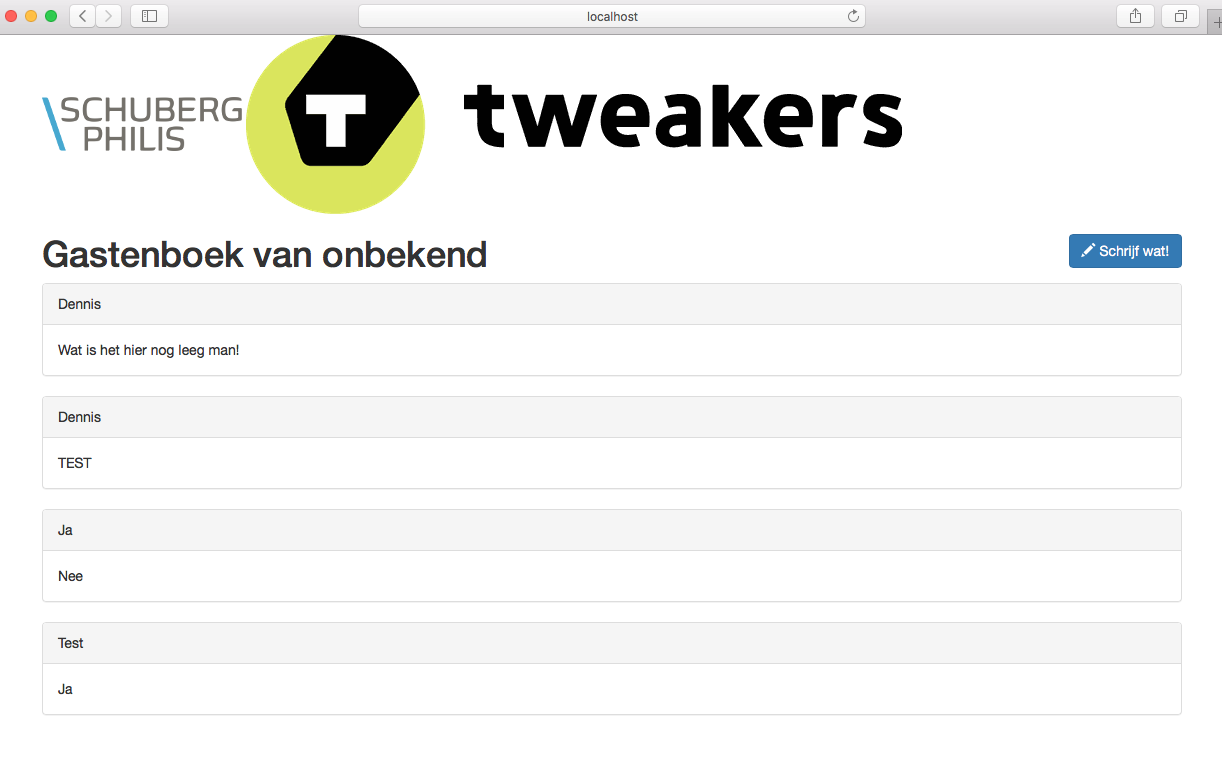
Try adding a comment to the guestbook!

Running the container as a daemon
$ docker run -p 80:80 -d sbpdemo/guestbook
d505aed5555015ac5bd1830e6aaabce28f4c4397f9afb5852f483218c364ed59Either use ctrl + C or close your terminal to stop the container. Now let's restart it with the -d flag to daemonize it
Are your entries still there?

Containers are immutable. Any changes are not persisted over a restart

Adding persistency using a docker volume
$ docker ps
CONTAINER ID IMAGE COMMAND CREATED STATUS PORTS NAMES
15389537b93f sbpdemo/guestbook "npm start" 41 minutes ago Up 41 minutes 0.0.0.0:80->80/tcp nifty_albattani
$ docker kill ${your_container_id}
$ docker run -p 80:80 --mount source=test,target=/usr/src/app/db/ -d sbpdemo/guestbook
54d928c956c8cd89d6e7682fdec81a7c342e3b454f4884571014e5fc77f04601We can use Docker volumes to keep the db.json persisted on your laptop
Add a new comment again to the guestbook

Docker volumes
$ docker kill 54d928c
54d928c
$ docker run -p 80:80 --mount source=test,target=/usr/src/app/db/ -d sbpdemo/guestbook
a23bb19046fef6151548016580a4254e40d85e937159326dd7e582160b350a1eNow let's restart again and you'll see the comment is still there
We've used a docker volume to hold the information
$ docker volume inspect test
[
{
"CreatedAt": "2018-10-14T13:47:45Z",
"Driver": "local",
"Labels": null,
"Mountpoint": "/var/lib/docker/volumes/test/_data",
"Name": "test",
"Options": null,
"Scope": "local"
}
]
Using environment variables with Docker
We can pass environment variables through to docker with the --env option
$ docker run -p 80:80 --env NAME="Andy" --mount source=test,target=/usr/src/app/db/ -d sbpdemo/guestbook
6290bca82f3cc9c5bdd010defa1f29af4568ff3bd186049e2a0c89534a40acd4With this, we can configure options inside our container without adjusting the image itself

What are the downsides of running containers this way?
Kubernetes
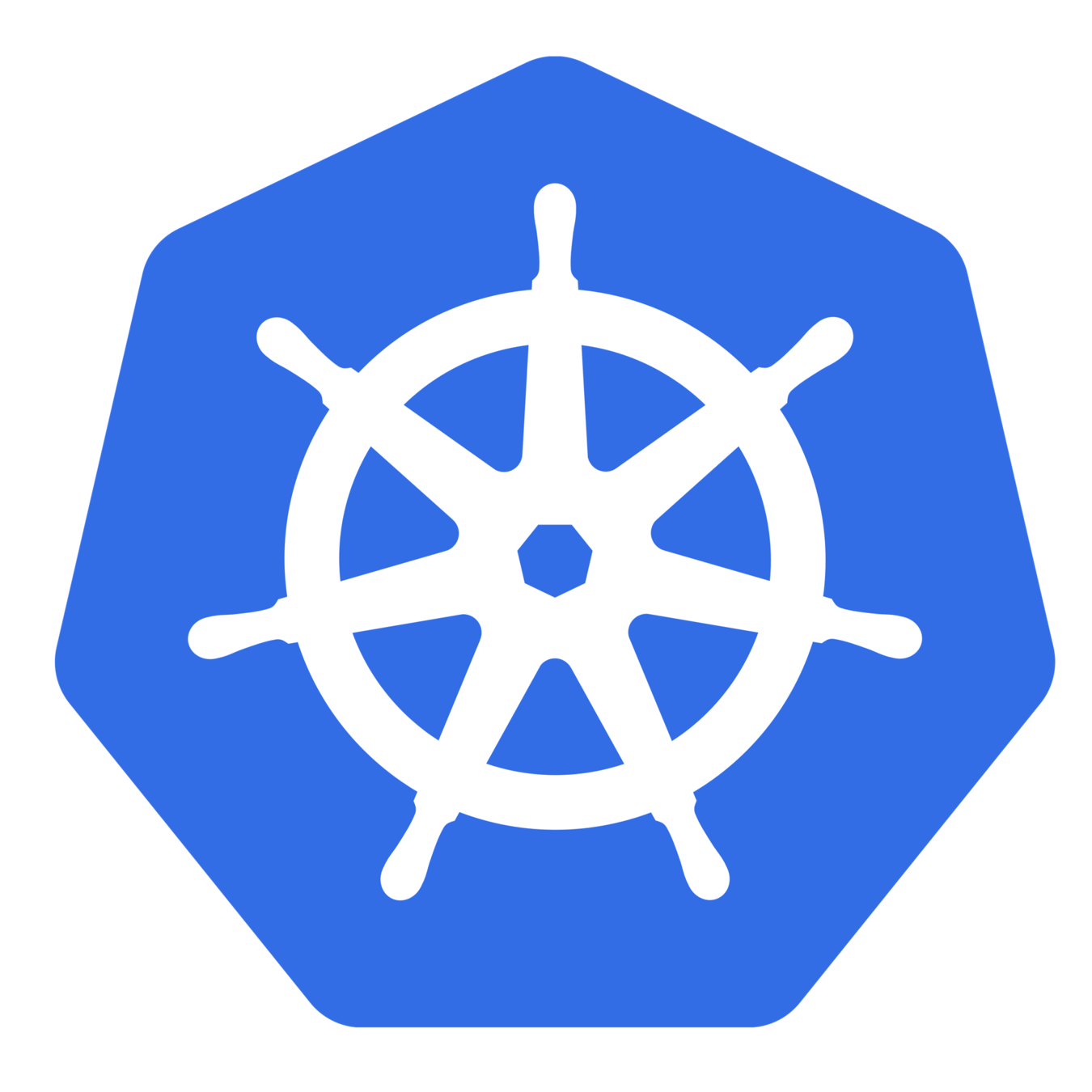

What is Kubernetes?

- Container Orchestration and Scheduling
- Allows you to run your containers at scale
- Abstracts away IaaS into simple resources, everything becomes an API call
- Slowly becoming a distributed kernel for applications
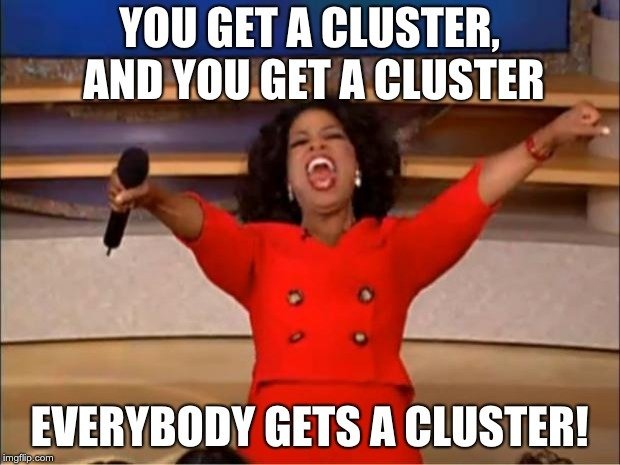

Connecting to the cluster

cd tweakers-workshop
./workshop.sh connect user22
mv ~/.kube/config my_kube_config_backup
mv user22.kubeconfig ~/.kube/configThere is a script we'll use called ./workshop.sh (and workshop.ps1 for Windows)
If you feel more comfortable, you can directly download your kubeconfig from this link:
https://s3-eu-west-1.amazonaws.com/sbp-demo-public/${cluster_name}.kubeconfig
Moving our guestbook to Kubernetes

Pods, Replica Sets and Deployments
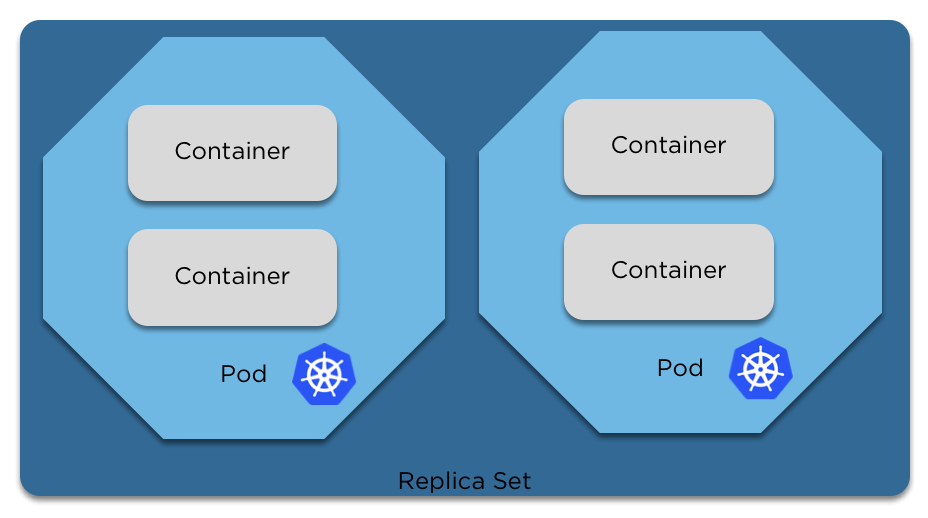

Pods
A pod is more than just a container (or image). It contains configuration, volumes, the amount of RAM and/or CPU you need (allocations) and priority
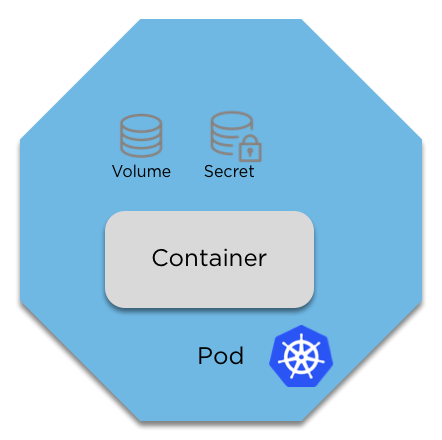

Replica Sets
Replica sets are quite simple. They ensure the number of pods you request are running.
If you have too many, one will be terminated.
If you have too few, one will be created.
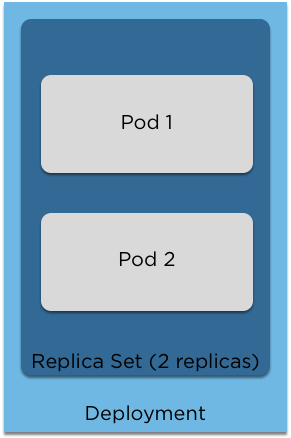

Deployments
These are versioned copies of a replica set. They can be upgraded, downgraded and when they are changed a new copy is created.
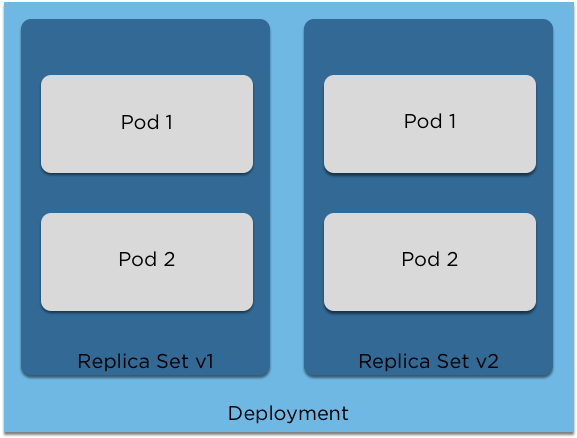

Retagging our image using our new user ID
$ docker tag sbpdemo/guestbook sbpdemo/guestbook:${user_ID}For example, as user1:
$ docker tag sbpdemo/guestbook sbpdemo/guestbook:user1Please ensure you have done this so as to not override others images!

Pushing our docker image
$ docker login
Login with your Docker ID to push and pull images from Docker Hub. If you don't have a Docker ID, head over to http
s://hub.docker.com to create one.
Username: sbpdemo
Password:
WARNING! Your password will be stored unencrypted in /home/arepton/.docker/config.json.
Configure a credential helper to remove this warning. See
https://docs.docker.com/engine/reference/commandline/login/#credentials-store
Login SucceededLogin with the username 'sbpdemo' and the password provided
And push our docker image from before
$ docker push sbpdemo/guestbook:${user_id}
Creating our deployment
$ kubectl run my-guestbook --image sbpdemo/guestbook:${user_id}

What just happened?
- A new deployment was created
- That created a replica set with a replica count of 1
- That contained a single pod
- Which contained the single image you just pushed to Docker Hub
- And started it running inside your kubernetes cluster

Checking on your pod
$ kubectl get pods
NAME READY STATUS RESTARTS AGE
my-guestbook-54cc64dbcf-fwds2 1/1 Running 0 1mWe can port-forward to our pod to view it remotely
$ kubectl port-forward my-guestbook-54cc64dbcf-fwds2 8080:80
Forwarding from 127.0.0.1:8080 -> 80
Forwarding from [::1]:8080 -> 80
Handling connection for 8080
Handling connection for 8080Open http://localhost:8080 to view it

Letting everyone view your guestbook
$ kubectl expose deployment my-guestbook --type=LoadBalancer --port=80
service/my-guestbook exposedOnce again, this is a challenging and complicated task...


What just happened?
- We asked Kubernetes to expose our deployment
- Kubernetes created a new Service (another type of resource in Kubernetes) of type LoadBalancer (others include ClusterIP and NodePort)
- Kubernetes talked to AWS for us and created a Load Balancer that's publicly available and connects through to our pod

Checking our new publicly available site
Try visiting the new CNAME in your browser!
$ kubectl get services
NAME TYPE CLUSTER-IP EXTERNAL-IP PORT(S) AGE
kubernetes ClusterIP 100.64.0.1 <none> 443/TCP 2d
my-guestbook LoadBalancer 100.67.30.86 a8ef38fb4cfcb11e89b610afb2428ec8-705870703.eu-west-1.elb.amazonaws.com 80:32567/TCP 39s
Putting our environment variable back in
Let's clean up our deployment and redeploy using an environment variable
$ kubectl delete deployment my-guestbook
deployment.extensions "my-guestbook" deleted
$ kubectl run my-guestbook --image sbpdemo/guestbook:user1 --env NAME=Andy
deployment.apps/my-guestbook createdRefresh your webpage!

Share your GuestBooks on Slack and leave some comments for one another

If the pod restarts, like before, we'll lose all the info


So let's move to using a database!
$ kubectl apply -f mariadb/Create your database and cluster ip using:
And confirm your pod is running using the get pods command again
$ kubectl get pods
NAME READY STATUS RESTARTS AGE
my-guestbook-5cd7c6b86d-jbq29 1/1 Running 0 2m
mysql-5766c846b5-jx5qf 1/1 Running 0 2m
Option 1: Creating the schema yourself
$ kubectl port-forward mysql-5766c846b5-jx5qf 3306
Forwarding from 127.0.0.1:3306 -> 3306
Forwarding from [::1]:3306 -> 3306Once again, create a port-forward so you can connect to your mysql container
Now, open a new shell (or if using a Mac/Linux, run this command in the background with &)

Using docker for tools
$ docker run -it mysql:5.6 mysql -h host.docker.internal -u root -p
Enter password: Handling connection for 3306
Welcome to the MySQL monitor. Commands end with ; or \g.
Your MySQL connection id is 10
Server version: 5.6.41 MySQL Community Server (GPL)
Copyright (c) 2000, 2018, Oracle and/or its affiliates. All rights reserved.
Oracle is a registered trademark of Oracle Corporation and/or its
affiliates. Other names may be trademarks of their respective
owners.
Type 'help;' or '\h' for help. Type '\c' to clear the current input statement.
mysql>We now need to install the database schema, which will require the mysql command. Instead of installing this on our laptops, we can use docker!
(For those using Linux, this probably won't work, but put your hand up and we'll come and help. You'll need to replace the host with the ip of your VM)

Using docker for tools
$ docker run -i mysql:5.6 mysql -h host.docker.internal -u root -ppassword < guestbook/database.sql
Warning: Using a password on the command line interface can be insecure.
Handling connection for 3306Now that we can connect, import the database schema:
And you can confirm our schema looks ok:
$ docker run -it mysql:5.6 mysql -h host.docker.internal -u root -p messages -e "SHOW TABLES;"
Enter password:
Handling connection for 3306
+--------------------+
| Tables_in_messages |
+--------------------+
| messages |
+--------------------+Using port-forwards and docker, it's possible to move all sorts of workloads to the cloud quickly and easily

Option 2: Use the other image
$ kubectl patch deployment mysql -p '{"spec":{"template":{"spec":{"containers":[{"name":"mysql","image":"sbpdemo/mysql:5.6"}]}}}}'
I've created another image with the schema pre-loaded

Recreating our GuestBook with the database backend
$ kubectl delete deployment my-guestbook
$ kubectl run my-guestbook --image sbpdemo/guestbook:user1 --env NAME=Andy --env DATABASE_TYPE="mysql"Refresh your page and add your comments!

Adding Requests and Limits in Kubernetes

Requests

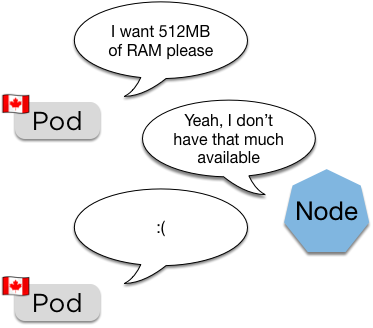
(Canadian pods are very polite)
spec:
containers:
resources:
requests:
memory: "64Mi"
cpu: "250m"- Requests are the pod asking for a certain amount of RAM and CPU to be available
- The scheduler uses this to place the pod
Pod will remain pending until space becomes available (also how the cluster autoscaler works)
Limits

spec:
containers:
resources:
limits:
memory: "128Mi"
cpu: "500m"- Limits are a hard limit on the resources the pod is allowed
- These are passed directly to the container runtime, so usually this is docker
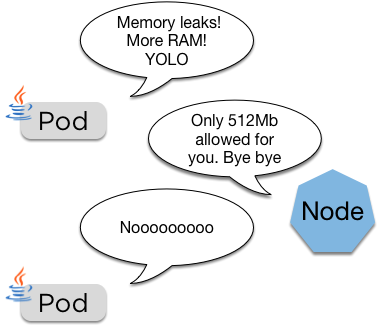
If the pod goes over its limit it'll be restarted
Quotas

apiVersion: v1
kind: ResourceQuota
metadata:
name: k8s-quota
spec:
hard:
requests.cpu: "2"
requests.memory: 2Gi
limits.cpu: "2"
limits.memory: 2Gi- Quotas limit total resources allowed
- Quotas are assigned to namespaces


Developer:
Cluster Admin:
Using Quotas

We'll use the quota from above:
$ kubectl create -f quotas-limits/quota.yml
resourcequota/k8s-quota createdAnd now let's try and scale out our deployment:
$ kubectl scale deployment my-guestbook --replicas=10
deployment.extensions/my-guestbook scaledAnd now we check if the quota worked...
$ kubectl get pods
NAME READY STATUS RESTARTS AGE
my-guestbook-7965b5f789-ck9jv 1/1 Running 0 8m
mysql-5d76fb8d49-dxnnb 1/1 Running 0 9mQuotas continued

This could be quite confusing if someone didn't know about the quota. Let's do some debugging:
$ kubectl get replicasets
NAME DESIRED CURRENT READY AGE
my-guestbook-7965b5f789 10 1 1 22m
mysql-5d76fb8d49 1 1 1 19m
kubectl describe replicaset my-guestbook-7965b5f789
Name: my-guestbook-7965b5f789
Events:
Type Reason Age From Message
---- ------ ---- ---- -------
Normal SuccessfulCreate 24m replicaset-controller Created pod: my-guestbook-7965b5f789-dbctw
~~~Truncated~~~
Warning FailedCreate 3m23s replicaset-controller Error creating: pods "my-guestbook-7965b5f789-j2wkr" is forbidden: failed quota: k8s-quota: must specify limits.cpu,limits.memory,requests.memory
Warning FailedCreate 2m3s (x6 over 3m22s) replicaset-controller (combined from similar events): Error creating: pods "my-guestbook-7965b5f789-wdhgm" is forbidden: failed quota: k8s-quota: must specify limits.cpu,limits.memory,requests.memoryWhen a quota is active, all pods must have limits and requests set.
Adding Requests and Limits

We'll redo our kubectl run command and add the requests and limits in:
$ kubectl delete deployment my-guestbook
$ kubectl run my-guestbook --image sbpdemo/guestbook:user1 --env NAME=Andy --env=DATABASE_TYPE=mysql --requests='cpu=100m,memory=256Mi' --limits='cpu=150m,memory=512Mi' --replicas=10
deployment "my-guestbook" createdAnd now we can see the quota protected us:
$ kubectl get pods
NAME READY STATUS RESTARTS AGE
my-guestbook-97f659799-6jmq9 1/1 Running 0 1m
my-guestbook-97f659799-9c4p6 1/1 Running 0 1m
my-guestbook-97f659799-btxcs 1/1 Running 0 1m
my-guestbook-97f659799-x9w59 1/1 Running 0 1m
mysql-5d76fb8d49-dxnnb 1/1 Running 0 15mLet's check on the other 6 pods:
$ kubectl describe replicaset my-guestbook-97f659799
Warning FailedCreate 3m30s replicaset-controller Error creating: pods "my-guestbook-97f659799-kdm8g" is forbidden: exceeded quota: k8s-quota, requested: limits.memory=512Mi, used: limits.memory=2Gi, limited: limits.memory=2GiWhat now?

- With this we can limit namespaces effectively
- You can set default limits and requests for a namespace, so if it's not set it'll get the default
- Spending the time early on to get your limits and requests right will pay off in the long run
Liveness and Readiness Probes

Readiness probes

A readiness probe will stop a pod from being entered into Service until it's ready
Some examples include:
readinessProbe:
exec:
command:
- grep 'alive'
- /var/log/application.log readinessProbe:
httpGet:
path: /healthz
port: 8080
httpHeaders:
- name: X-Custom-Header
value: DevOpsDaysreadinessProbe:
tcpSocket:
port: 8080
initialDelaySeconds: 15
periodSeconds: 20ports:
- name: liveness-port
containerPort: 8080
hostPort: 8080
livenessProbe:
httpGet:
path: /healthz
port: liveness-portReadiness probes

$ kubectl apply -f readiness_probe1.ymlWe can add a readiness probe by editing our deployment and adding it to the pod spec. An example is in the repo using the image "sbpdemo/guestbook:user1"
Open this file, editing the image tag to match your own guestbook image, and then apply:
Readiness probes

$ kubectl apply -f readiness_probe2.ymlYou'll now see via a kubectl get pods that your pod is not ready, this is because the readiness probe is not correct.

You can fix this using the second readiness probe yaml file, once again editing it first to change to your own tag:
Liveness Probes

$ kubectl apply -f liveness_probe.ymlUsed to restart a pod when it's 'dead'
This is key for when your application might be 'dead' but the process itself is still running
For example:
- An application that crashes
- A dependency on a file or process

AuthZ and RBAC Challenge

What is RBAC?

Role Based Access Control is the successor to ABAC (Attribute Based Access control)
It comprises of Roles and Bindings
kind: Role
apiVersion: rbac.authorization.k8s.io/v1
metadata:
namespace: default
name: read-only-pods-deploy
rules:
- apiGroups: [""]
resources: ["pods", "deployments"]
verbs: ["get", "watch", "list"]kind: RoleBinding
apiVersion: rbac.authorization.k8s.io/v1
metadata:
name: read-only-pods-deploy
namespace: default
subjects:
- kind: Group
name: managers
apiGroup: rbac.authorization.k8s.io
- kind: User
name: product-owner
apiGroup: rbac.authorization.k8s.io
roleRef:
kind: Role
name: read-only-pods-deploy
apiGroup: rbac.authorization.k8s.ioRoles

kind: Role
apiVersion: rbac.authorization.k8s.io/v1
metadata:
namespace: default
name: read-only-pods-deploy
rules:
- apiGroups: [""]
resources: ["pods", "deployments"]
verbs: ["get", "watch", "list"]This is an example of a role that only allows read only access to pods and deployments in the default namespace
Role Bindings

kind: RoleBinding
apiVersion: rbac.authorization.k8s.io/v1
metadata:
name: read-only-pods-deploy
namespace: default
subjects:
- kind: Group
name: managers
apiGroup: rbac.authorization.k8s.io
- kind: User
name: product-owner
apiGroup: rbac.authorization.k8s.io
roleRef:
kind: Role
name: read-only-pods-deploy
apiGroup: rbac.authorization.k8s.ioNow we can apply this role to the 'managers' group and the user product-manager, to ensure nothing gets broken
Role Bindings apply to a namespace, if you want it for the entire cluster you can use a 'ClusterRoleBinding'
RBAC Challenge

In each of your clusters there is an additional user, named 'devopsandy'. The challenge is:
- Create a role and a role binding in your cluster, which:
- Allows the 'devopsandy' user full permissions to create, edit, view and delete anything inside the 'default' namespace
- Not permit access to any other namespace or any cluster resources
Raise your hand or call out when you've done it and Andy will test from the stage
RBAC Challenge


Answers can be found here:
https://bit.ly/rbacanswers
Questions?

Thank you!
